- Home
- Robert J. Sawyer
Wiping Out Page 2
Wiping Out Read online
Page 2
But our special cargo, the Annihilator, was more—much more. It was a planet killer, a destroyer of whole worlds. We'd said when Garo Alexanian invented the technology that we'd never, ever use it.
But, of course, we were going to. We were going to use it right now.
It could have gone either way. Humans certainly weren't more clever than Altairians; the technology we'd recovered from wrecked ships proved that. But sometimes you get a lucky break.
Our scientists were always working to develop new weapons; there was no reason to think that Altairian scientists weren't doing the same thing. Atomic nuclei are held together by the strong nuclear force; without it, the positively charged protons would repel each other, preventing atoms from forming. The Annihilator translates the strong nuclear force into electromagnetism for a fraction of a second, causing atoms to instantly fling apart.
It was a brilliant invention from a species that really wasn't all that good at inventing. With the countless isolated communities that had existed in Earth's past, you'd expect the same fundamental inventions to have been made repeatedly—but they weren't. Things we now consider intuitively obvious were invented only once: the water wheel, gears, the magnetic compass, the windmill, the printing press, the camera obscura, and the alphabet itself arose only a single time in all of human history; it was only trade that brought them to the rest of humanity. Even that seemingly most obvious of inventions, the wheel, was created just twice: first, near the Black Sea, nearly six thousand years ago, then again, much later, in Mexico. Out of the hundred billion human beings who have existed since the dawn of time, precisely two came up with the idea of the wheel. All the rest of us simply copied it from them.
So it was probably a fluke that Alexanian conceived of the Annihilator. If it hadn't occurred to him, it might never have occurred to anyone else in the Trisystems; certainly, it wouldn't have occurred to anybody any time soon. Five hundred years ago, they used to say that string theory was twenty-first-century science accidentally discovered in the twentieth century; the Annihilator was perhaps thirtieth-century science that we'd been lucky enough to stumble upon in the twenty-fifth.
And that luck could have just as easily befallen an Altairian physicist instead of a human one. In which case, it would be Earth and Tau Ceti IV and Epsilon Indi II that would have been about to feel its effects, instead of Altair III.
We released the Annihilator—a great cylindrical contraption, more than three hundred meters long—from our cargo bay; the Quetzalcoatlus and the Rhamphorhynchus had had Annihilators, too, each costing over a trillion credits. Only one was left.
But one was all it would take.
Of course, we'd have to engage our hyperdrive as soon as the annihilation field connected with Altair III. The explosion would be unbelievably powerful, releasing more joules than anyone could even count—but none of it would be superluminal. We would be able to outrun it, and, by the time the expanding shell reached Earth, sixteen years from now, planetary shielding would be in place.
The kill would go to the Pteranodon; the name history would remember would be mine.
* * * *
They teach you to hate the enemy—they teach you that from childhood.
But when the enemy is gone, you finally have time to reflect.
And I did a lot of that. We all did.
About three-quarters of Altair III was utterly destroyed by the annihilation field, and the rest of it, a misshapen chunk with its glowing iron core exposed, broke up rapidly.
The war was over.
But we were not at peace.
* * * *
The sphere was an unusual sort of war memorial. It wasn't in Washington or Hiroshima or Dachau or Bogatá, sites of Earth's great monuments to the horrors of armed conflict. It wasn't at Elysium on Mars, or New Vancouver on Epsilon Indi II, or Pax City on Tau Ceti IV. Indeed it had no permanent home, and, once it faded from view, a short time from now, no human would ever see it again.
A waste of money? Not at all. We had to do something—people understood that. We had to commemorate, somehow, the race that we'd obliterated and the planet we'd destroyed, the fragment left of it turning into rubble, a spreading arc now, a full asteroid belt later, girdling Altair.
The memorial had been designed by Anwar Kanawatty, one of the greatest artists in the Trisystems: a sphere five meters across, made of transparent diamond. Representations of the continents and islands of the planet that had been Altair III (a world farther out from that star now had that designation) were laser-etched into the diamond surface, making it frostily opaque in those places. But at the gaps between—representing the four large oceans of that planet, and the thousands of lakes—the diamond was absolutely clear, and the rest of the sculpture was visible within. Floating in the center of the sphere were perfect renderings of three proud Altairian faces, one for each gender, a reminder of the race that had existed once but did no more.
Moments ago, the sphere had been launched into space, propelled for the start of its journey by invisible force beams. It was heading in the general direction of the Andromeda galaxy, never to be seen again. Kanawatty's plans had already been destroyed; not even a photograph or holoscan of the sphere was retained. Humans would never again look upon the memorial, but still, for billions of years, far out in space, it would exist.
No markings were put on it to indicate where it had come from, and, for the only time in his life, Kanawatty had not signed one of his works; if by some chance it was ever recovered, nothing could possibly connect it with humanity. But, of course, it probably would never be found by humans or anyone else. Rather, it would drift silently through the darkness, remembering for those who had to forget.
The flashback was necessary, they said. It was part of the process required to isolate the memories that were to be overwritten.
Memory revision will let us put the Annihilator genie back in the bottle. And, unlike so many soldiers of the past, unlike all those who had slaughtered in the name of king and country before me, I will never again have a flashback.
What if we need the Annihilator again?
What if we find ourselves in conflict with another race, as we had with the people of Altair? Isn't it a mistake to wipe out knowledge of such a powerful weapon?
I look at the war memorial one last time, as it drifts farther and farther out into space, a crystal ball against the velvet firmament. It's funny, of course: there's no air in space, and so it should appear rock-steady in my field of view. But it's blurring.
I blink my eyes.
And I have my answer.
The answer is no. It is not a mistake.
* * *
Visit www.Fictionwise.com for information on additional titles by this and other authors.

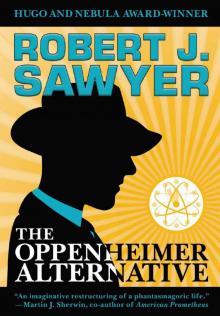 The Oppenheimer Alternative
The Oppenheimer Alternative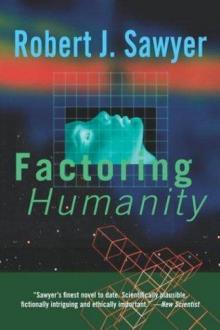 Factoring Humanity
Factoring Humanity The Shoulders of Giants
The Shoulders of Giants Stream of Consciousness
Stream of Consciousness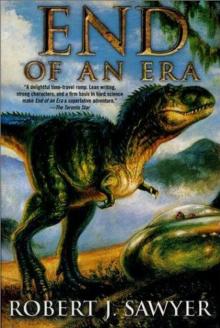 End of an Era
End of an Era The Terminal Experiment
The Terminal Experiment Far-Seer
Far-Seer Mindscan
Mindscan You See But You Do Not Observe
You See But You Do Not Observe Star Light, Star Bright
Star Light, Star Bright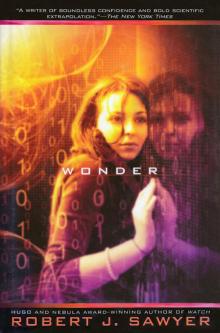 Wonder
Wonder Wiping Out
Wiping Out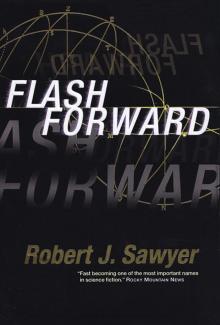 Flashforward
Flashforward Above It All
Above It All Frameshift
Frameshift The Neanderthal Parallax, Book One - Hominids
The Neanderthal Parallax, Book One - Hominids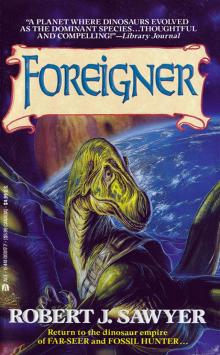 Foreigner
Foreigner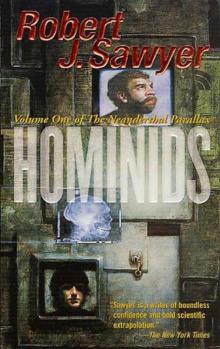 Neanderthal Parallax 1 - Hominids
Neanderthal Parallax 1 - Hominids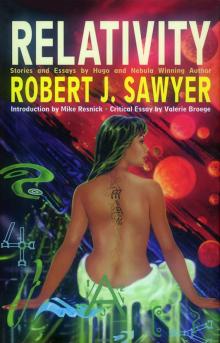 Relativity
Relativity Identity Theft
Identity Theft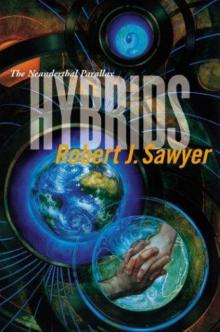 Hybrids np-3
Hybrids np-3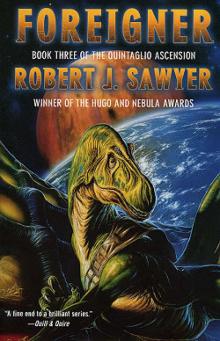 Foreigner qa-3
Foreigner qa-3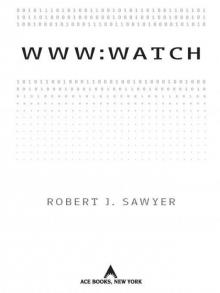 WWW: Watch
WWW: Watch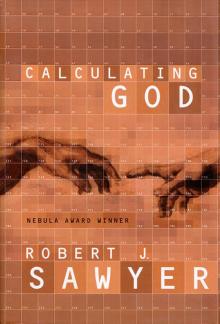 Calculating God
Calculating God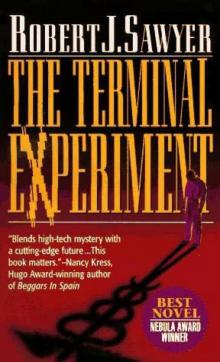 The Terminal Experiment (v5)
The Terminal Experiment (v5) Peking Man
Peking Man The Hand You're Dealt
The Hand You're Dealt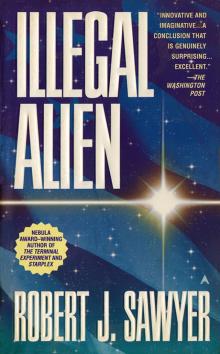 Illegal Alien
Illegal Alien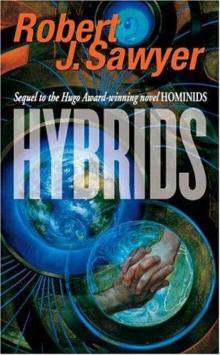 Neanderthal Parallax 3 - Hybrids
Neanderthal Parallax 3 - Hybrids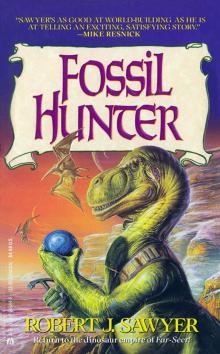 Fossil Hunter
Fossil Hunter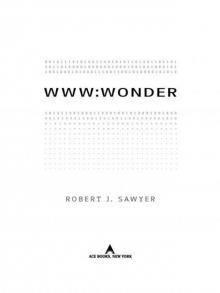 WWW: Wonder
WWW: Wonder Iterations
Iterations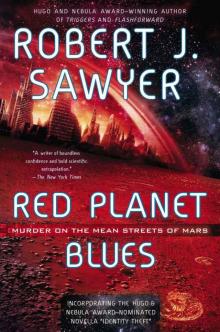 Red Planet Blues
Red Planet Blues Rollback
Rollback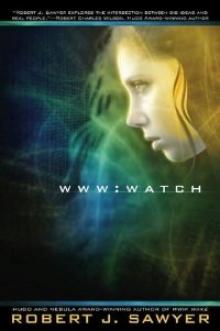 Watch w-2
Watch w-2 Gator
Gator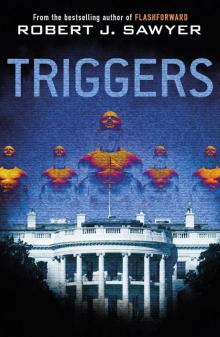 Triggers
Triggers Neanderthal Parallax 2 - Humans
Neanderthal Parallax 2 - Humans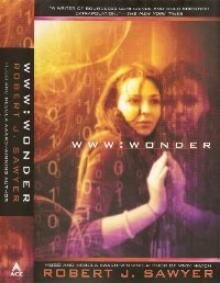 Wonder w-3
Wonder w-3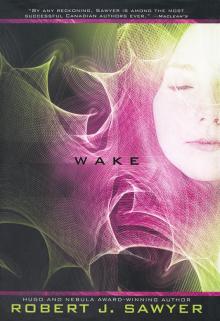 Wake
Wake Just Like Old Times
Just Like Old Times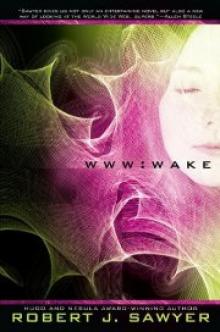 Wake w-1
Wake w-1 Fallen Angel
Fallen Angel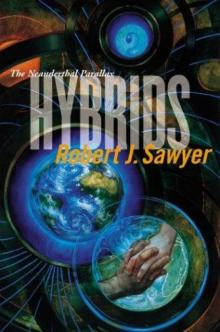 Hybrids
Hybrids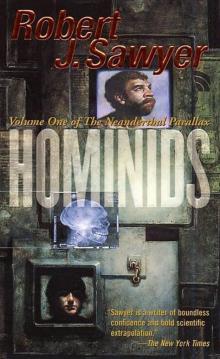 Hominids tnp-1
Hominids tnp-1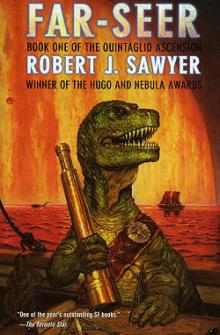 Far-Seer qa-1
Far-Seer qa-1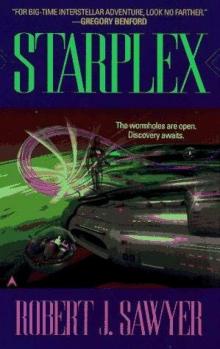 Starplex
Starplex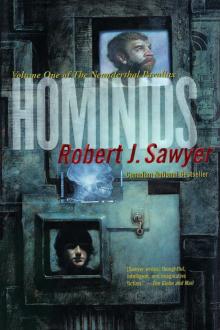 Hominids
Hominids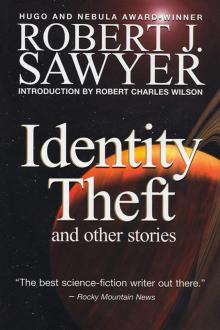 Identity Theft and Other Stories
Identity Theft and Other Stories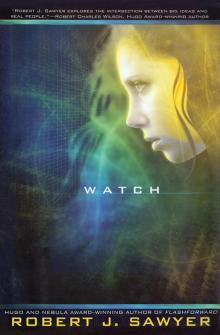 Watch
Watch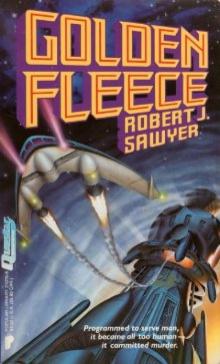 Golden Fleece
Golden Fleece Quantum Night
Quantum Night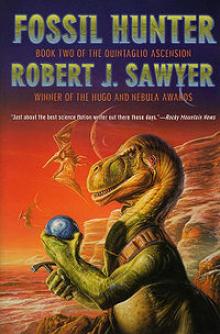 Fossil Hunter qa-2
Fossil Hunter qa-2 Humans np-2
Humans np-2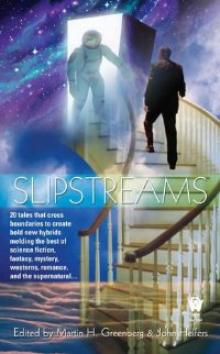 Biding Time
Biding Time